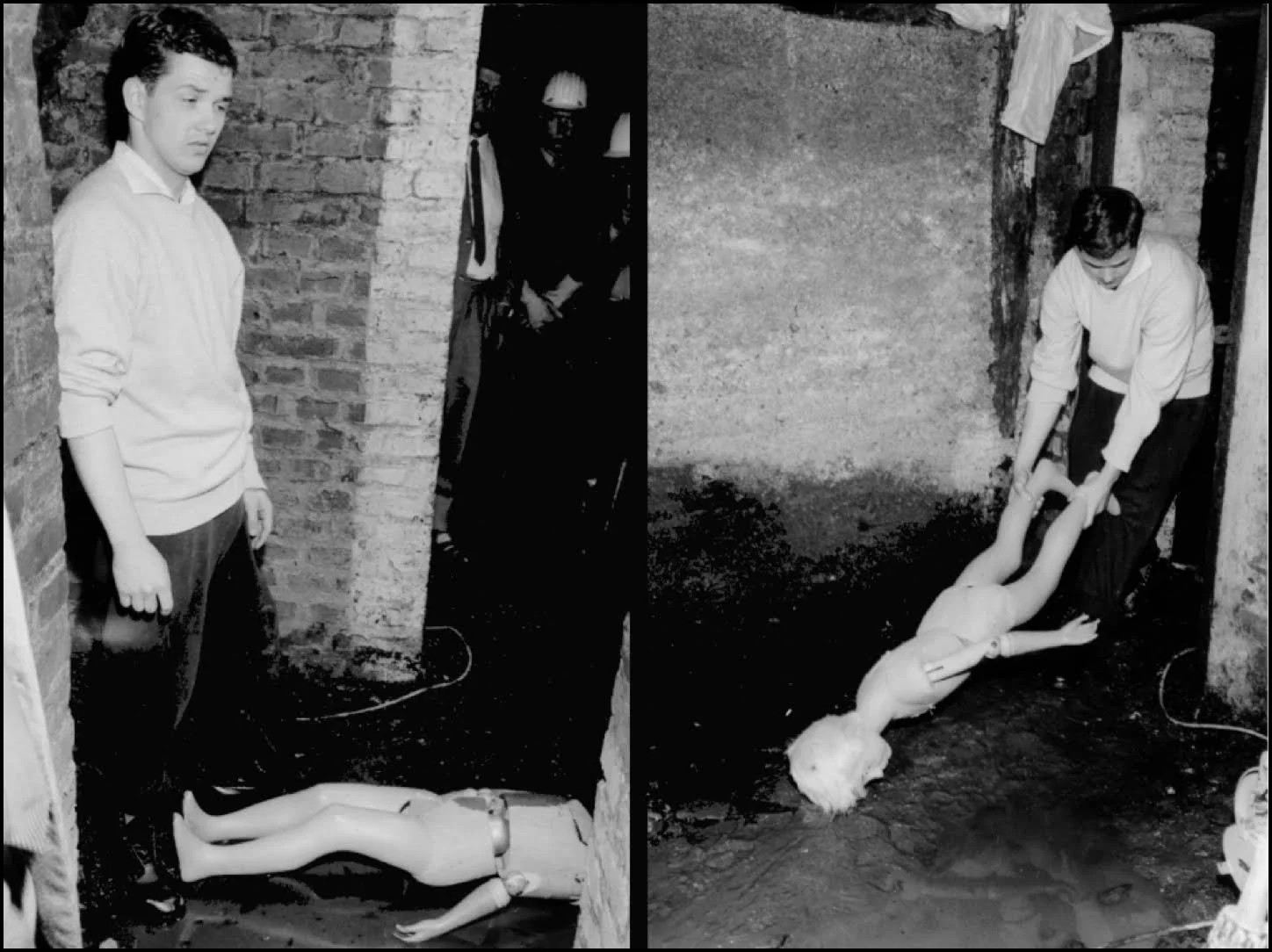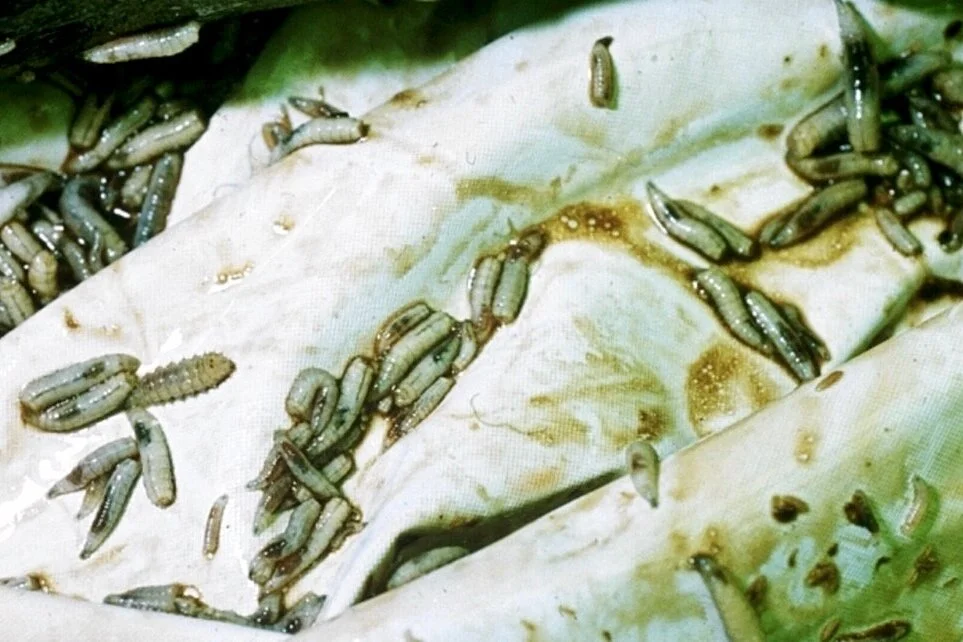Comments on the historical background & Interview
The idea of insects living inside and on the (human) body literally drives people affected by the thought crazy. We receive samples containing alleged insect stain evidence on a regular basis which on examination mostly turn out to be non-animal fragments of skin, hair, fibers et cetera.
Decompositional processes depend on temperature, humidity, and light, as well as on animals that can access the body. In low-level cases, suicides, or cases of self-neglect especially, these factors are not always taken into consideration because a full investigation may not have taken place.
How one forensic biologist stumbled across the only remaining body parts of Adolf Hitler… in a floppy-disc case in Moscow.
A brief overview is given of past and present DNA typing and the establishment of forensic DNA databases in Europe.
We have not been able to distinguish different isolates from the nematode Caenorhabditis elegans by morphological means. However, they differ on the molecular level and strains from several geographic regions can be identified with the help of "genetic fingerprints" using the oligonucleotide probe (GTG)5.
Allele frequency distributions at the short tandem repeat (STR) loci HUMVWA, HUMFES, HUMF13A01 and of the variable number of tandem repeat (VNTR) locus D1S80 were determined in a Filipino population from Metro Manila (103 individuals) by use of the polymerase chain reaction (PCR) followed by polyacrylamide gel electrophoresis (PAGE).
Applied DNA typing in medico-legal investigations, in criminalistic practice, and in paternity cases often relies on high inclusion and exclusion probabilities.
One hundred eighty topshells (Monodonta lineata) were exposed to inhibitory learning procedures.
To detect and quantify the amount of Propoxur in insects of forensic importance and search for entomotoxicologic indicators, the HPLC (High Performance Liquid Chromatography) technique was used on individuals collected during the ecological succession associated with the corpses of rabbits.
From a criminalistic and legal perspective, we report 2 cases of homosexual pedophile serial killers who share certain characteristics.
Report on a fully confessing, very young serial killer who exactly detailed his crimes und intentions to the police, und several psychiatrists.
Here is that rare thing, a good popular book on forensic entomology that is also an illuminating read on forensic science itself and on the art of being an expert witness.
It is frequently difficult to prove the vitality in cases of fatal hanging. Statistical analysis demonstrated a significant correlation between elevated DNA content and reduced water content of strangulation marks.
In an apartment, bone fragments were found in a fireplace. Furthermore, a varnished skull was found elsewhere in the same apartment.
Having solved the last technical hurdles to extract DNA information from virtually any biological material, forensic biologists now have to ponder the ethical and social questions of using information from exonic DNA.
For several years Y-chromosomal microsatellites (short tandem repeats, STRs) have been well established in forensic practice. In this context, the genetic characteristics of the Y chromosome (i.e. its paternal inheritance and lack of recombination) render STRs particularly powerful.
Several cases are reported which show that a wide range of applications in medico-legal questions and hygiene together or apart from estimating the PMI can be answered by use of Forensic Entomology techniques including close observation of larval development.
The hypervariable tetranucleotide STR polymorphism DXS10011 is a powerful marker for forensic purposes.
To permit quick identification of arthropods, random amplified polymorphic DNA typing (RAPD) was used to support classical morphological and medico-legal analysis of maggots on a human corpse.
We report a case of skin damages on a human corpse found in late spring in a suburban area of Cosenza (Region Calabria, Southern Italy) caused by activity of Tapinoma nigerrimum (Nylander) (Hymenoptera: Formicidae).
Wounds of living persons are a potential target for the same flies that live, or feed early on corpses. This can lead to complications in estimation of PMI but also allows to determine additional information that might be valuable in a trial, or during the investigations.
This is a case of an 80-year-old man who was neglected for one to two weeks in Calabria (Italy). Different flies and ant lesions were present.
Key Words: neglect of the elderly, forensic entomology, ants, ant lesions, Diptera.
Two cases demonstrate that full reliance on biological stains may lead to either wrongful convictions or no prosecution at all.
The online launch of the annual Francke Foundations’ exhibition, ‘Wunderkammer’ or ‘Chamber of Wonder’, on 2 May 2021 in Saxony-Anhalt, Germany, celebrated, among other things, the 300th anniversary of the first European children’s hospital on the Foundations’ premises in Halle/Saale.
An international journal dedicated to the applications of medicine and science in the administration of justice
Dermestidae and other necrophagous beetles may aid in the estimation of post-mortem interval, especially in situations where decompostionen is advanced and therefore, insect succession patterns are the best method available.
The combined analysis of both ant and blow fly evidence recovered from a corpse, and from the boot of a suspect, suggested that an assumed scenario in a high profile murder case was likely to be true.






























